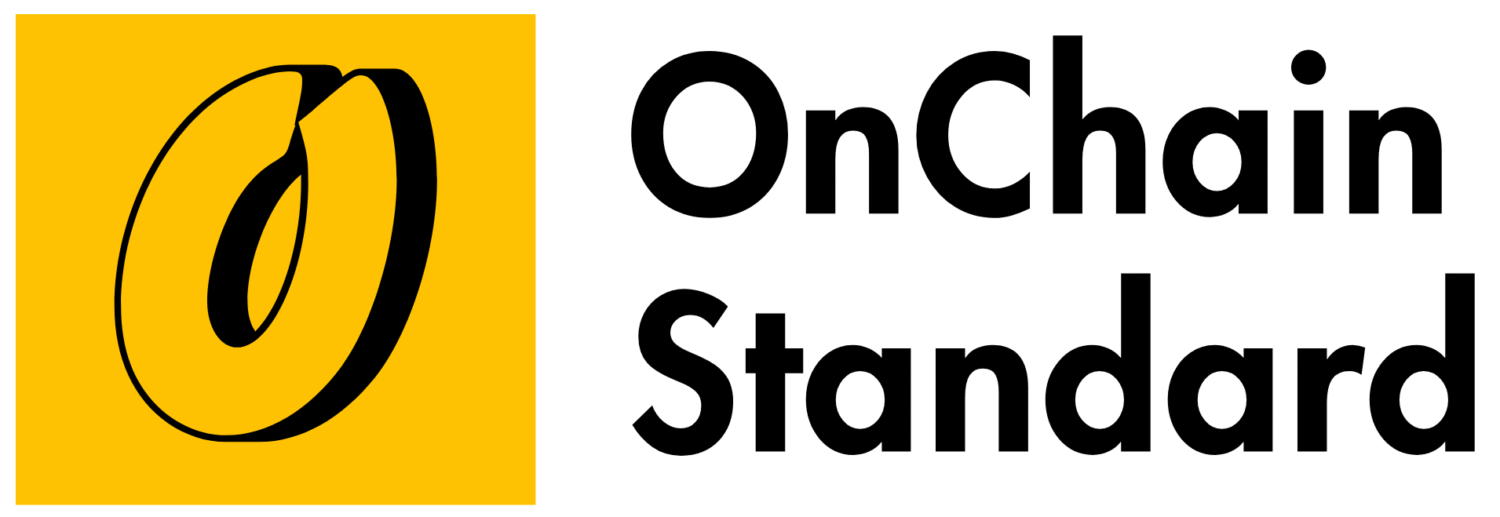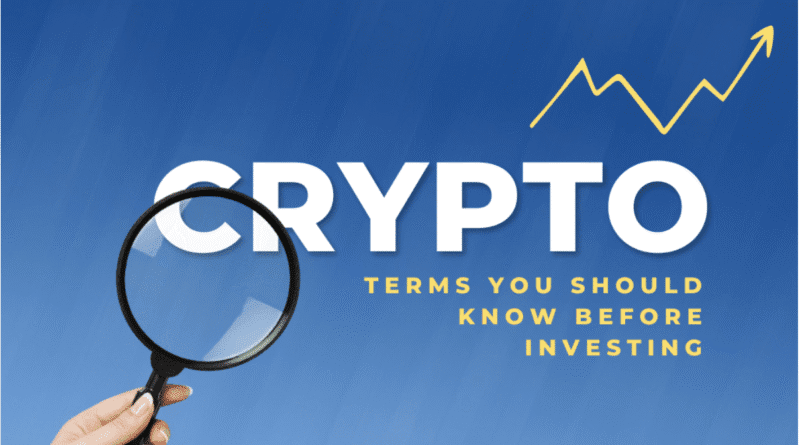50 Crypto Terms You Must Know in 2025
Introduction
The cryptocurrency market, valued at over $3 trillion in 2025, has developed a unique vocabulary blending technical terms, financial jargon, and community slang. Understanding these terms is crucial for investors, traders, and enthusiasts to navigate exchanges, DeFi platforms, and social media discussions on X or Discord. From acronyms like LFG and GM to technical concepts like gas fees and HODL, this educational guide defines 50 must-know crypto terms, providing clarity to thrive in the dynamic blockchain ecosystem.
50 Essential Crypto Terms
-
Address: A unique string (e.g., 0x123… for Ethereum) identifying a blockchain wallet for sending/receiving crypto.
-
Airdrop: Free distribution of tokens to promote a project, often requiring wallet connection. Beware scams costing $500 million in 2024.
-
Altcoin: Any cryptocurrency other than Bitcoin (e.g., Ethereum, Solana), often riskier with higher growth potential.
-
AML (Anti-Money Laundering): Regulations to prevent illicit crypto use, enforced under EU’s MiCA or U.S.’s GENIUS Act in 2025.
-
ATH (All-Time High): The highest price a crypto has reached (e.g., Bitcoin’s $103,000 in December 2024).
-
ATL (All-Time Low): The lowest price a crypto has hit (e.g., Ethereum’s $2,200 in 2022).
-
Bear Market: A prolonged price decline (e.g., 2022’s 60% market crash), signaling caution for traders.
-
BIP (Bitcoin Improvement Proposal): Proposals to enhance Bitcoin’s protocol, like BIP-39 for seed phrases.
-
Blockchain: A decentralized, transparent ledger recording all crypto transactions, powering $3 trillion market in 2025.
-
Bull Market: A sustained price increase (e.g., 2024’s 80% Bitcoin rally), indicating optimism.
-
CEX (Centralized Exchange): Platforms like Binance or Coinbase with KYC, handling $100 billion daily volume in 2025.
-
Cold Wallet: Offline storage (e.g., Ledger Nano X, $149) for securing crypto against hacks costing $1.2 billion in 2024.
-
DApp (Decentralized Application): Apps on blockchain (e.g., Uniswap), driving $500 billion DeFi TVL in 2025.
-
DeFi (Decentralized Finance): Blockchain-based financial systems (e.g., AAVE, Uniswap) without intermediaries, with $350 billion TVL on Ethereum.
-
DEX (Decentralized Exchange): Peer-to-peer trading platforms (e.g., PancakeSwap), offering instant liquidity for IDOs.
-
Dumping: Selling large amounts of crypto, often by whales, causing price drops (e.g., 2024 SHIB 10% crash).
-
DYOR (Do Your Own Research): Advice to verify projects before investing, critical with $3.7 billion in 2024 scam losses.
-
FOMO (Fear of Missing Out): Emotional urge to buy during price surges, often leading to losses in volatile markets.
-
FUD (Fear, Uncertainty, Doubt): Negative news or rumors spreading panic, like 2024’s false Binance ban reports.
-
Gas Fees: Costs for blockchain transactions (e.g., $2–$5 on Ethereum in 2025), reflecting network demand.
-
GM (Good Morning): A positive greeting on X or Discord, symbolizing crypto community optimism.
-
GMI (Gonna Make It): Slang for confidence in a project or personal success, often used on X.
-
Hard Fork: A blockchain protocol change creating a new chain (e.g., Ethereum’s 2016 DAO fork).
-
Hash Rate: Computing power securing a blockchain (e.g., Bitcoin’s 700 EH/s in 2025), indicating network strength.
-
HODL: Holding crypto long-term despite volatility, inspired by a 2013 Bitcoin forum post.
-
Hot Wallet: Internet-connected wallet (e.g., MetaMask), convenient but vulnerable to $1.5 billion in 2024 phishing attacks.
-
ICO (Initial Coin Offering): Unregulated token sale by projects, raising $1 billion in 2017 but prone to scams.
-
IDO (Initial DEX Offering): Token sale on DEXs like Raydium, raising $10 billion in 2024 with instant liquidity.
-
IEO (Initial Exchange Offering): Exchange-hosted token sale (e.g., Binance Launchpad), raising $5 billion in 2024 with KYC.
-
KYC (Know Your Customer): Identity verification required by CEXs and IEOs, aligning with 2025’s MiCA regulations.
-
Layer-1: Base blockchain protocols (e.g., Ethereum, Solana) supporting DApps, with Solana at 65,000 TPS.
-
Layer-2: Scaling solutions (e.g., Optimism, Arbitrum) reducing Ethereum gas fees, handling $50 billion in TVL.
-
LFG (Let’s Fing Go)*: Enthusiastic slang for hype or bullish sentiment, common in meme coin communities.
-
Liquidity Pool: DeFi pools (e.g., Uniswap’s $5 billion TVL) enabling trading, critical for IDOs.
-
Market Cap: Total value of a crypto’s circulating supply (e.g., Bitcoin’s $1.6 trillion in 2025).
-
Mining: Validating transactions on proof-of-work blockchains (e.g., Bitcoin), consuming 150 TWh globally in 2025.
-
Mooning: Rapid price surge, often hyped on X (e.g., Solana’s 80% rally in Q1 2025).
-
NFT (Non-Fungible Token): Unique digital assets (e.g., Bored Apes), with $2 billion in Solana NFT volume in 2025.
-
NGMI (Not Gonna Make It): Pessimistic slang for projects or investors likely to fail, used on X or Discord.
-
Node: A computer validating blockchain transactions, with Ethereum having 10,000+ nodes in 2025.
-
Private Key: Secret code controlling a wallet, critical to secure offline to avoid $1 billion in 2024 thefts.
-
Pump and Dump: Artificially inflating a token’s price before selling, costing $200 million in 2024 meme coin scams.
-
Rug Pull: Developers abandoning a project after raising funds, draining $500 million in 2024 DeFi scams.
-
Seed Phrase: 12–24 word recovery phrase for wallets, never shared to prevent phishing losses ($1.5 billion in 2024).
-
Smart Contract: Self-executing code on blockchains (e.g., Ethereum), powering DeFi and NFTs.
-
Stablecoin: Tokens pegged to assets like USD (e.g., USDC, USDT), holding 10% of 2025’s market cap.
-
Staking: Locking PoS tokens (e.g., ETH, 4–6% APY) to earn rewards, with $500 billion staked in 2025.
-
TVL (Total Value Locked): Funds locked in DeFi protocols, reaching $500 billion in 2025 (70% on Ethereum/Solana).
-
Wallet: Software (hot) or hardware (cold) for storing crypto, with 200 million active wallets in 2025.
-
Whale: Investor holding large crypto amounts (e.g., 1,000+ BTC), influencing markets with $500 million in 2024 price swings.
Why These Terms Matter
-
Market Navigation: Understanding terms like HODL or trading jargon (e.g., FOMO, FUD) helps interpret market sentiment on X or Telegram.
-
Investment Decisions: Knowing tokenomics (e.g., TVL, staking) and risks (e.g., rug pulls, pump and dumps) informs smarter investments.
-
Community Engagement: Slang like LFG, GM, or NGMI fosters connection in crypto communities, critical for spotting trends or scams.
-
Security: Terms like seed phrase and cold wallet emphasize protection against $3.7 billion in 2024 losses.
How to Apply These Terms
-
Research Projects:
-
Use “DYOR” to vet ICOs/IDOs/IEOs with Token Sniffer, checking for rug pull risks or high whale ownership.
-
Example: A token with 40% supply in one wallet (whale) and no liquidity lock signals a potential rug pull.
-
-
Monitor Market Trends:
-
Track “ATH” or “moon” signals on CoinGecko to identify bullish assets like Solana (80% rally in 2025).
-
Example: Set a Whale Alert for $5 million BTC “exchange inflows” to anticipate dumps.
-
-
Secure Assets:
-
Store funds in a “cold wallet” and protect your “seed phrase” to avoid $1.5 billion in phishing losses.
-
Example: Use a Ledger Nano X to secure 0.1 BTC ($8,000) offline.
-
-
Engage with Communities:
-
Join X or Discord groups using “GM” or “LFG” to gauge sentiment, but verify projects to avoid $200 million in 2024 pump-and-dump scams.
-
Example: An X post with “LFG” hyping a new IDO prompts a Token Sniffer check scoring 85/100, indicating safety.
-
-
Leverage DeFi and Staking:
-
Stake “PoS” tokens like ETH (5% APY) via Lido to earn passive income, contributing to $500 billion TVL.
-
Example: Stake $1,000 in SOL (6.67 SOL at $150) for $60 annual rewards.
-
Challenges and Considerations
-
Evolving Slang: Terms like LFG or NGMI shift with community trends, requiring active engagement on X or Discord.
-
Technical Complexity: Concepts like smart contracts or hash rates demand learning, especially for beginners.
-
Scam Risks: Misinterpreting hype (e.g., FOMO-driven IDOs) led to $500 million in 2024 rug pulls; use Token Sniffer.
-
Regulatory Impact: Terms like KYC and AML reflect 2025’s MiCA (EU) and GENIUS Act (U.S.), affecting IEOs and CEXs.
-
Market Volatility: FUD or mooning can amplify 20–50% price swings, requiring caution in trading.
Conclusion
Mastering these 50 crypto terms equips you to navigate the $3 trillion crypto market in 2025 with confidence. From technical concepts like blockchain and smart contracts to slang like LFG and NGMI, this vocabulary unlocks insights into market trends, investment opportunities, and risks. By applying terms to research (DYOR), secure assets (cold wallets), and engage with communities (GM), you can make informed decisions. Use tools like CoinGecko for market data, Token Sniffer for scam checks, and secure platforms to stay safe in the dynamic, volatile crypto ecosystem.




